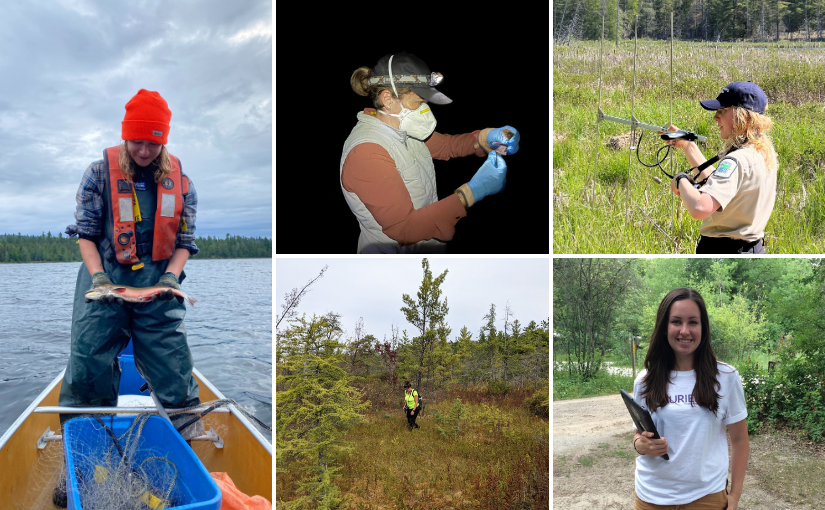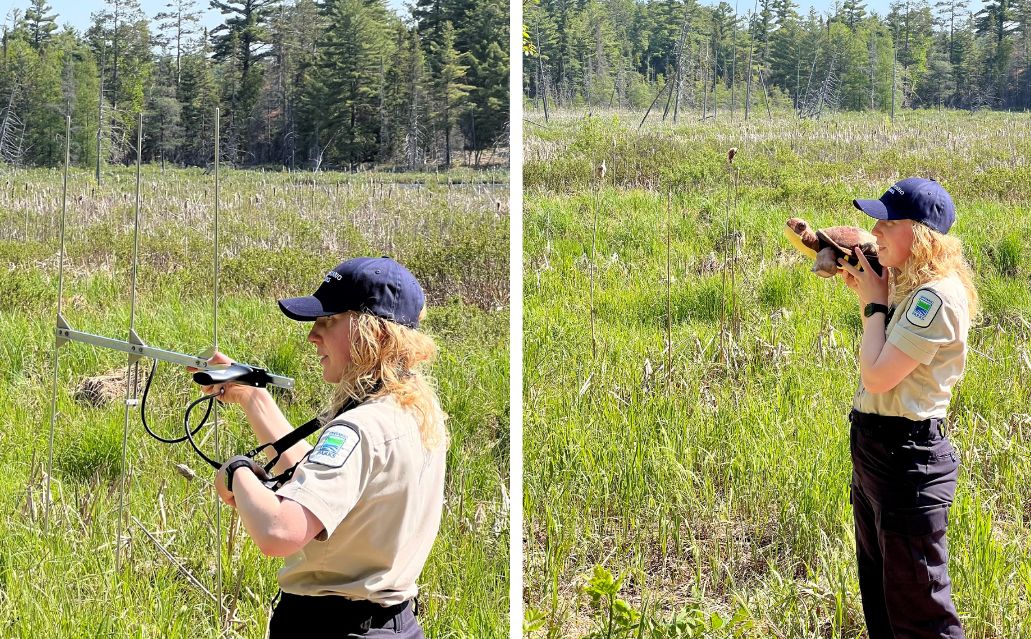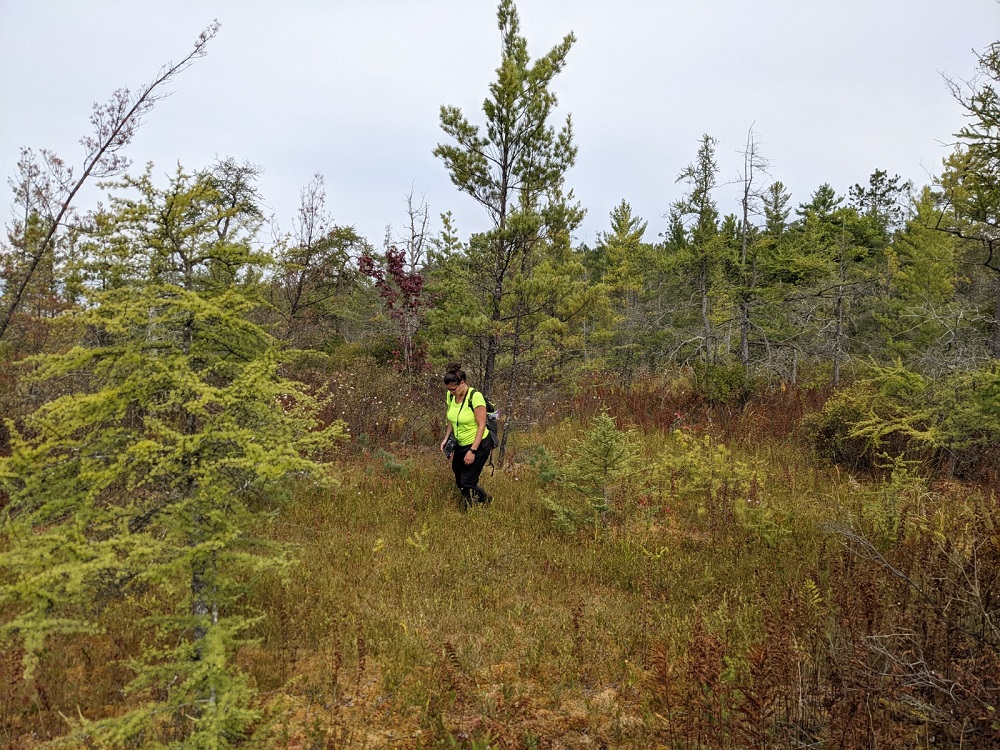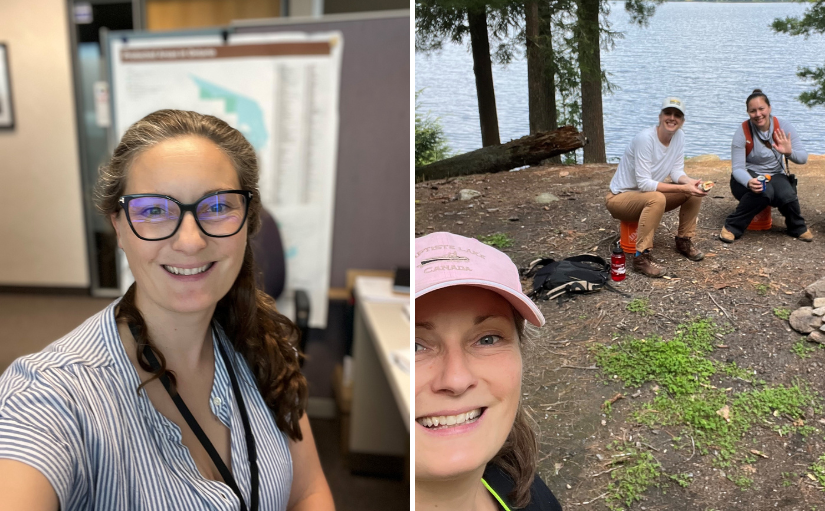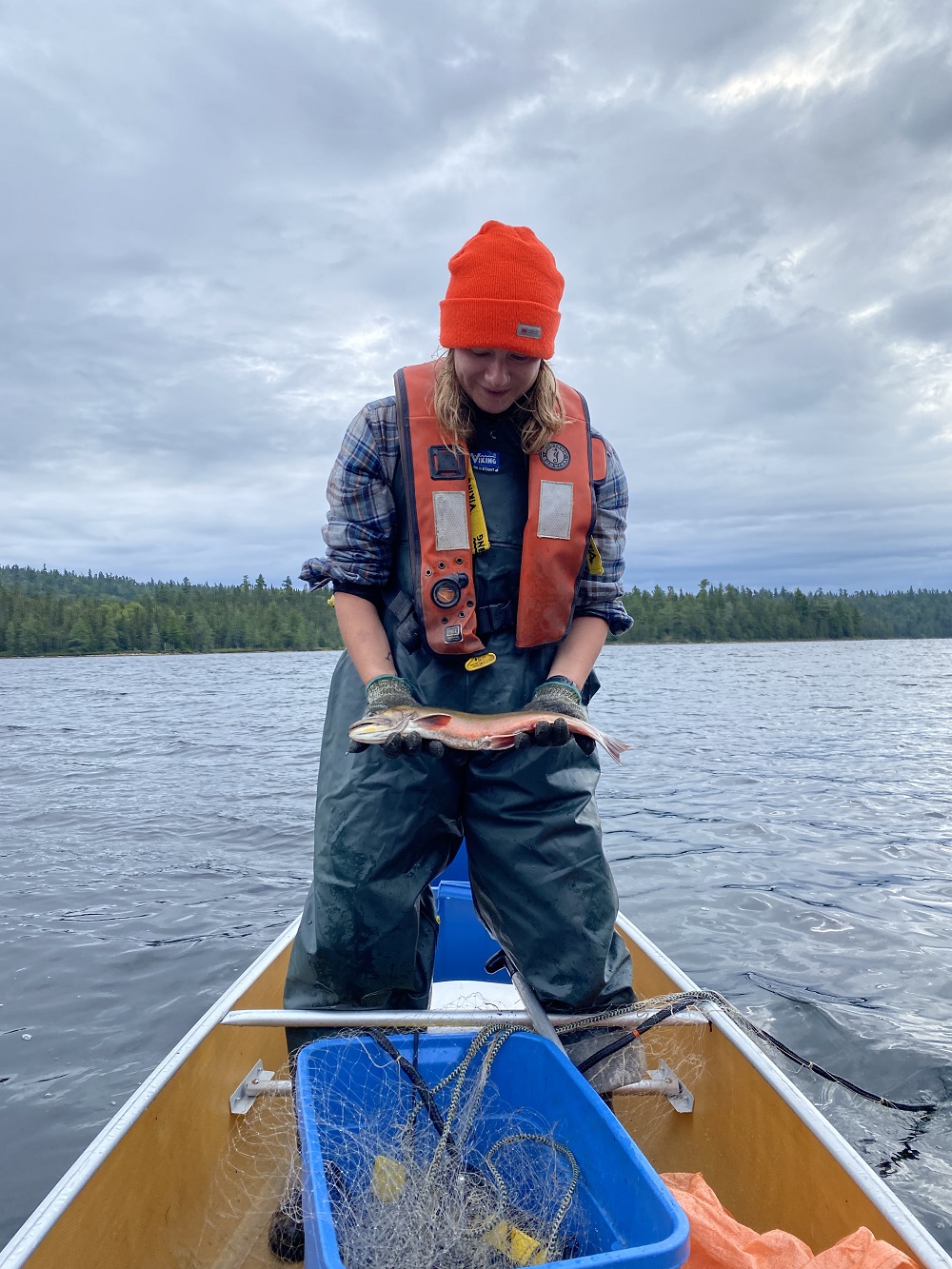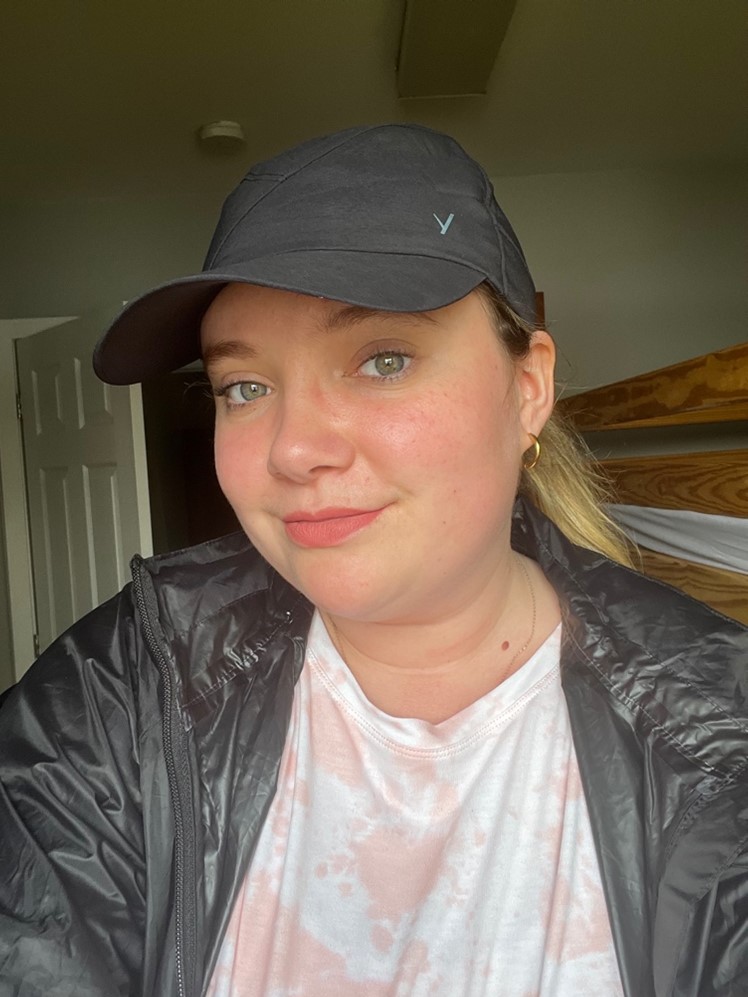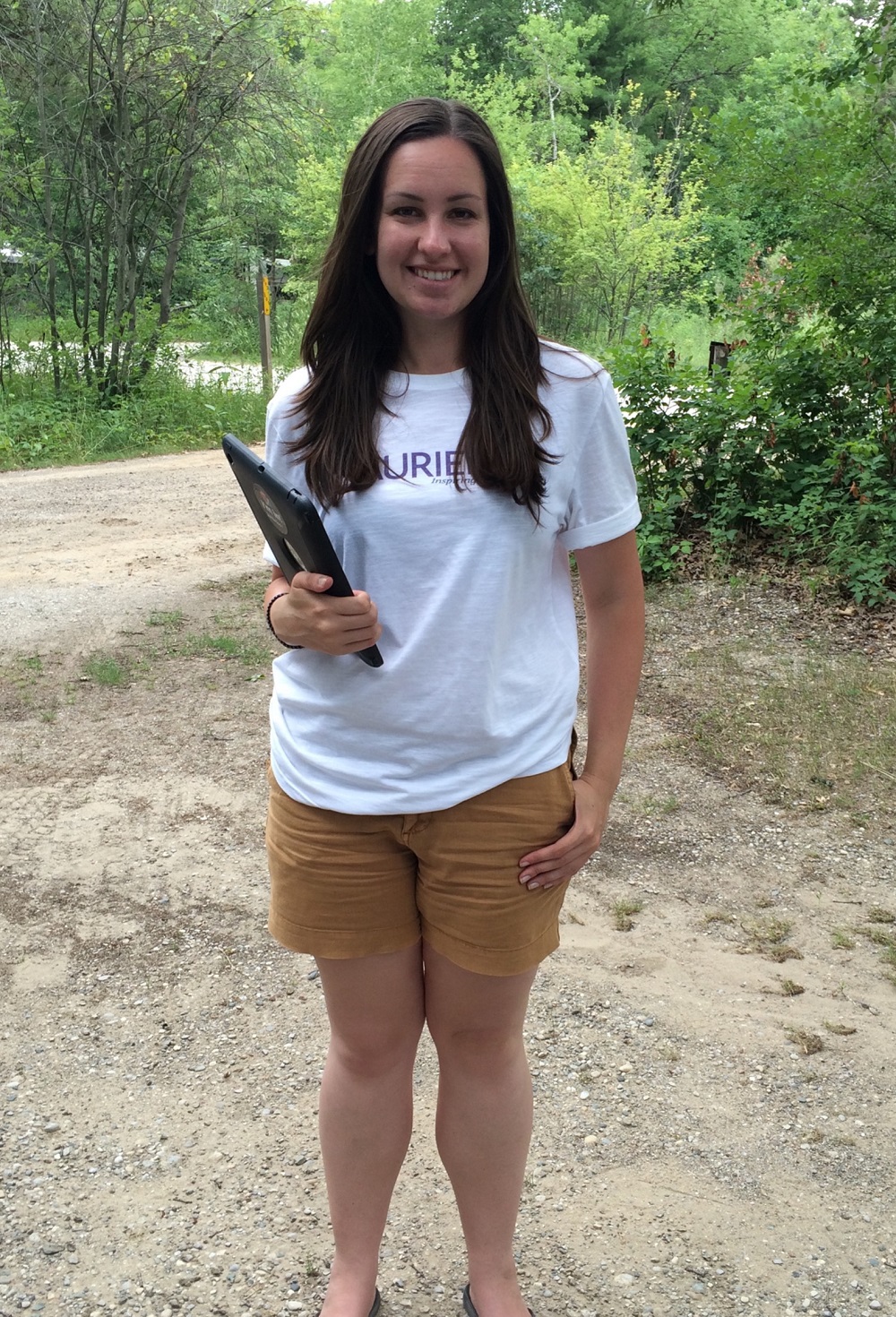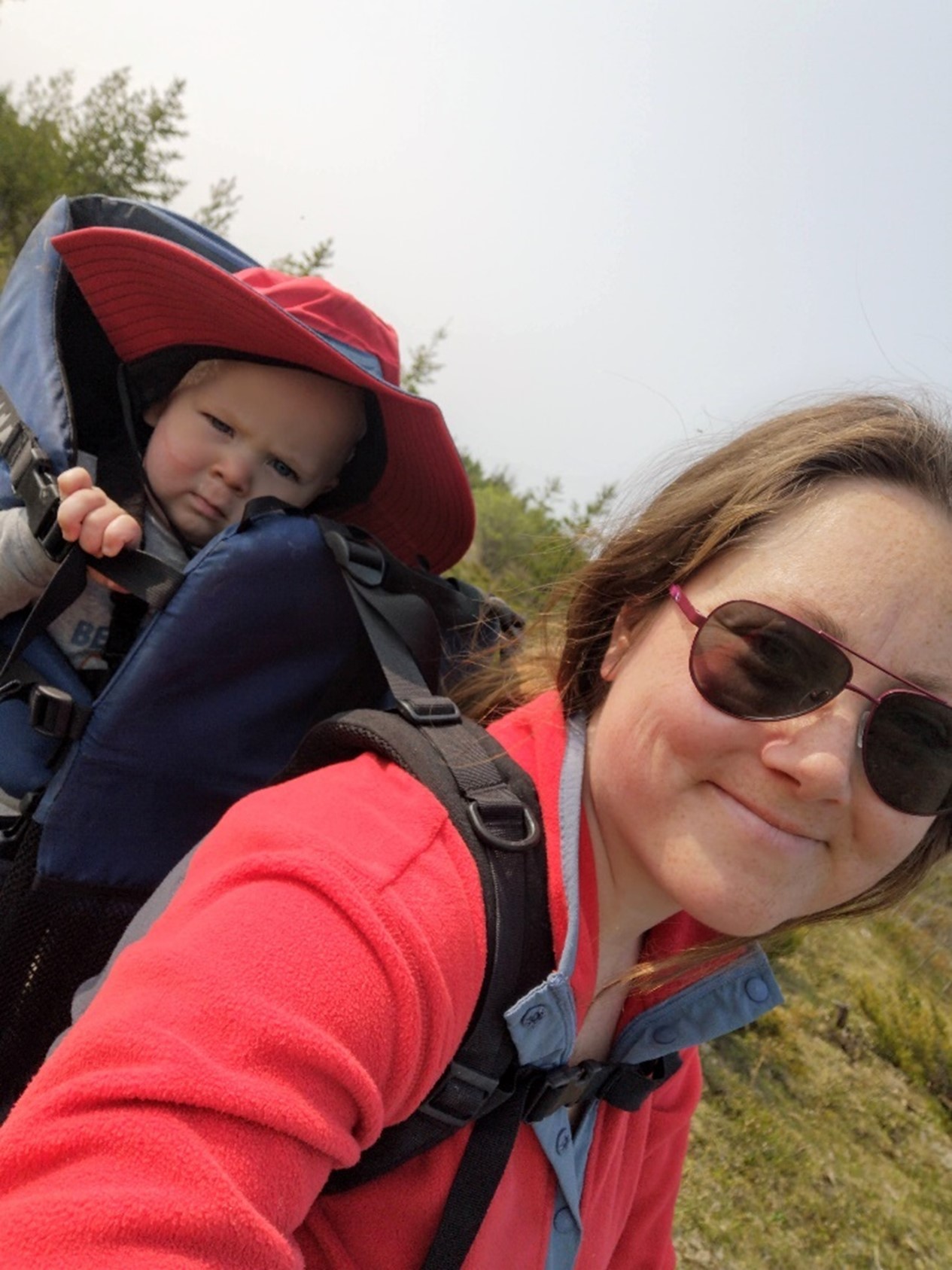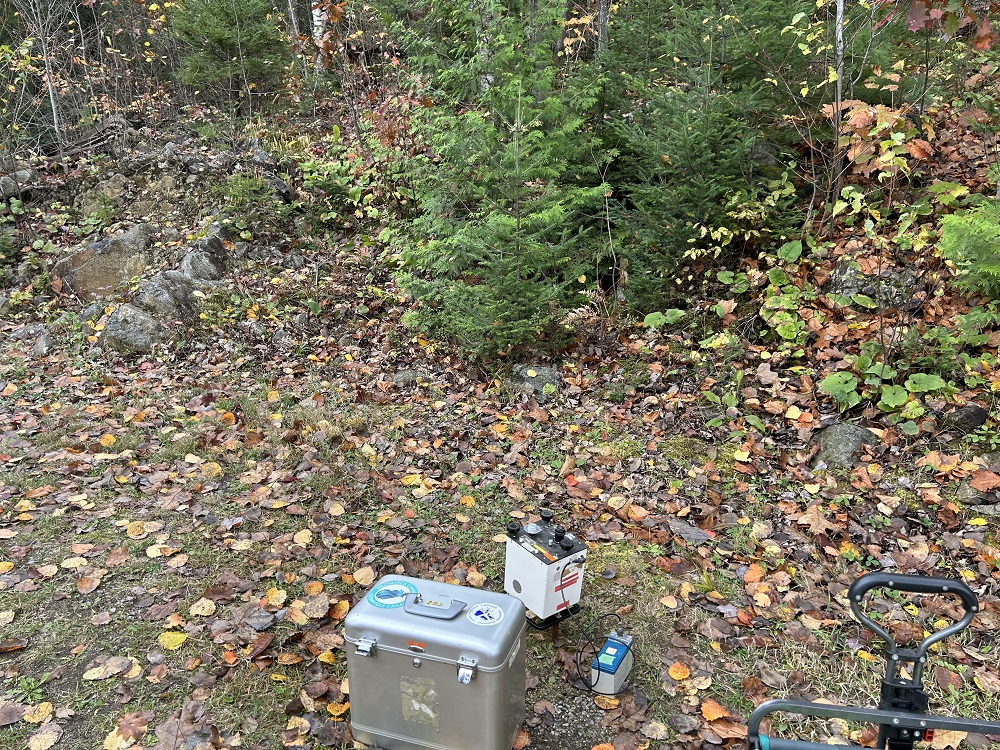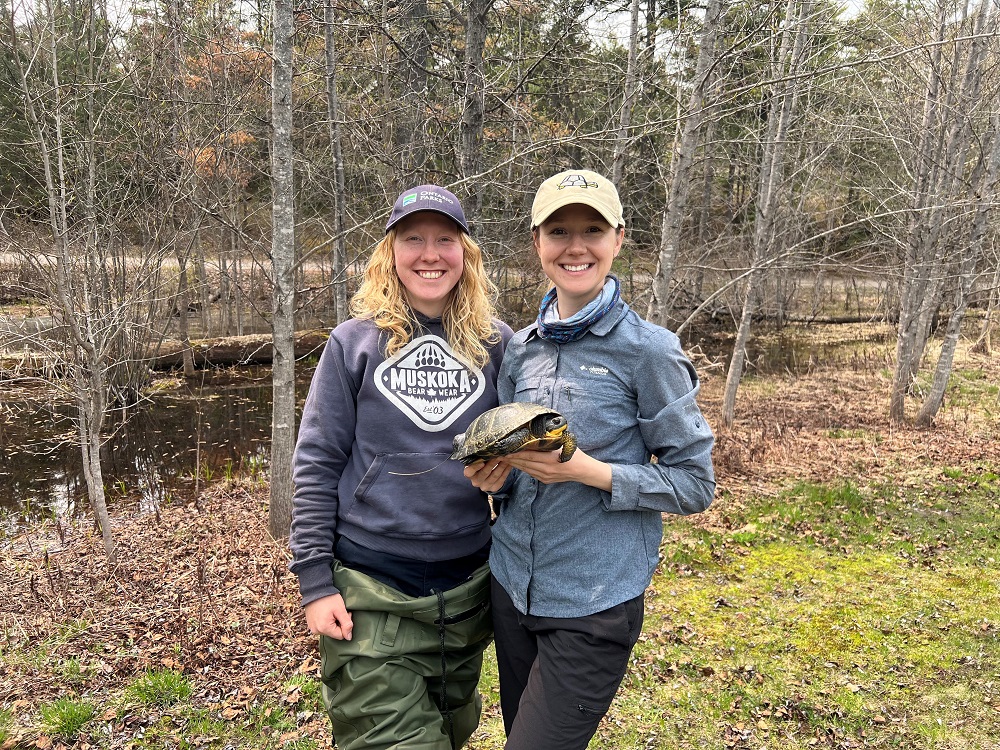Happy International Day of Women and Girls in Science!
Scientists are absolutely integral to Ontario Parks, working as researchers, biologists, ecologists, and more!
Take a look at the work of a few of our awesome women scientists:
Hope Freeman, Senior Park Naturalist
As the senior park naturalist of Grundy Lake Provincial Park, Hope oversees the education of park visitors as well as a variety of research and monitoring projects.
You can find Hope participating in Garlic Mustard removal efforts, bat box monitoring, and vernal pool surveys.
Hope’s Masters of Science project focused on Ontario turtles and their habitat, making the park’s Turtle Monitoring Project her personal favourite.
The Grundy Lake Turtle Monitoring Project celebrated its 10th anniversary in 2023 with a record number of turtle nests protected (70) and a new Blanding’s Turtle radio-tracking component! The radio-tracking project is in collaboration with Dr. Chantel Markle (see below!) and her team within the Wildlife Ecohydrology and Conservation Lab. Projects like these are important for determining the health of the Grundy Lake ecosystem and how we can better protect it.
“The opportunity to work with species at risk is one (amazing) thing; adding visitor education on top takes it to another level. Knowing that I am helping inspire conservation action is super fulfilling,” says Hope.
“Not to mention the chance to collaborate with mentors, fellow, and future scientists. Working together to protect the species and ecosystems I love is really rewarding, teamwork really does make the dream work. Honestly, I am where I am today thanks to the mentorship of brilliant female scientists!”
Pauline Catling, Senior Ecologist
Pauline is a senior ecologist from North-South Environmental Inc., surveying a number of provincial parks in Central Ontario for select species at risk plants.
Understanding the distribution and abundance of these at-risk species is crucial for making informed decisions that support their conservation.
“Being a scientist transcends gender, education or background,” says Pauline. “It is a never-ending curiosity, an open mind and a drive to discover and understand. It changes the way you look at the world and your surroundings, but also brings you constant joy in new discoveries.”
Michelle Karam, Executive Director
Michelle is the executive director of Land Care Niagara. She has been collecting capture data in Shorthills Provincial Park as part of a wider Ontario study to better understand the selection of summer roosting habitat of Ontario’s bats, especially bats listed as species at risk.
This information is hoped to help in conserving habitat for at-risk bats, and empower positive steps to assist these species.
“I have always known that I would work as a scientist in nature and with wildlife, but more specifically felt a calling to actively help them and be an advocate for our environment. I was always told in school that this career would not make money, but I always knew that my ethical values, being in the natural environment, and the satisfaction of helping far outweighed being financially wealthy,” says Michelle.
“I have never regretted being a zoologist. It has opened doors for me to adventure to many fantastic places and ecosystems as well as meet amazing people and animals. I feel so lucky to now set a great example for my two young daughters and show that they should go after their own dreams.”
Josephine Archbold, Research and Policy Analyst
Josephine is a newcomer to Ontario Parks. She has a MSc in Environmental Science and 20 years experience in the public sector in toxicology, environmental risk assessment, and public health.
We’re thrilled to have her on the team. She’s a great example of someone who has made a mid-career change to pursue work that aligns with her personal and professional goals.
She now chairs the Ontario Parks Science Committee. Working closely with the co-leads of the Ontario Parks Science Strategy, Josephine has been charged with leading the Secretariat in supporting the new Ontario Parks Science Committee.
Josephine’s passion and energy is sure to contribute to a fun and rewarding year for this committee.
“From a very young age, I have been passionate about nature and the environment. The longstanding family joke was that I was born asking, ‘Why.’ Pursuing the sciences, and in particular, the environmental sciences, was always a clear choice for me. I knew that science was my ticket to understanding the world around me and my path to making a difference,” says Josephine.
“I have been extraordinarily lucky in my career to work alongside and be mentored by brilliant women in science. There are more women in science than ever before, but there are still barriers and challenges, in particular for women in leadership roles. We need to hear the voices of women and a diversity of perspectives if we want to tackle the challenges that face us today. It is a privilege to join Ontario Parks, an organization that values the contribution and leadership of women and that values the importance of science. I am once again lucky to work alongside brilliant women and to join a team of interdisciplinary scientists that put conservation, sustainability, and different ways of understanding the world at the centre of everything they do.”
Andrea Waugh, Field Technician
Last summer, Andrea worked in our northeastern parks, collecting data for the Ontario Breeding Bird Atlas program. She did this by conducting point count surveys and deploying recording devices in Temagami.
She was also involved with monitoring Temagami’s Aurora Trout recovery and working with Killarney Provincial Park’s Lake Trout restoration.
Andrea is currently working with Ontario Parks’ Protected Areas section as a policy and research analyst between field seasons.
“‘Leave the saving of the world to the men? I don’t think so.’ – Elastigirl, The Incredibles (2004)”
Courtney Lanigan, Assistant Zone Ecologist
Courtney is a seasonal assistant ecologist in Ontario Parks’ Northeast Zone. Her primary work is with alvars, which are globally rare ecosystems.
Courtney works with fellow staff to adapt methodologies to the unique characteristics of alvars, determining the drivers and current state of these ecosystems. Specifically, the team is looking into how soil chemistry (due to bedrock composition) influences the occurrence and distribution of vegetative biodiversity. They are also collecting tree cores and analyzing them for fire scars (dendropyrochronolohy) to infer the role of fire in the conservation of these rare ecosystems.
“As a woman in science, the exceptional leadership, support, and guidance shown to me by my colleagues at Ontario Parks is not something to be taken for granted. In my time with Ontario Parks, I have had the pleasure of working in an inclusive, empowering workplace environment,” she says.
“Uniformity is not nature’s way; diversity is nature’s way.”
Catherine Reining, PhD Candidate/Project Coordinator
Catherine is a PhD candidate and ParkSeek project coordinator in the Department of Geography and Environment at Western University.
Catherine is currently exploring the barriers and enablers to accessing protected areas for improved population health promotion, which includes research at Pinery Provincial Park to better understand how visitor experiences in the park affect human health and well-being.
“I am grateful for the Ontario Parks staff who have championed this work and the park visitors for participating, it is one of the best parts of the job. I hope to help as many people experience protected areas as possible!”
Dr. Wendy McFadden-Smith, Tender Fruit and Grape Integrated Pest Management Specialist
Dr. McFadden-Smith works with the Ontario Ministry of Agriculture, Food and Rural Affairs monitoring for the invasive insect Spotted Lanternfly.
When not monitoring for the lanternfly, she is engaging community scientists to assist with reporting sightings of the insect.
Shelby Gibson, PhD Candidate
Shelby Gibson is a PhD candidate in the Department of Biology at York University.
She is currently studying pollination systems of culturally significant food and medicine plants in the Great Lakes region. Given the recent decline of many wild pollinator species, it is important to understand the role pollinators play in supporting healthy populations of culturally significant plant species.
Shelby is studying Common Bearberry (Arctostaphylos uva-ursi) in Burnt Lands Provincial Park. Common Bearberry is relatively understudied, and its pollination system has yet to be studied in North America.
Recently Shelby conducted a field experiment to determine the degree to which different pollination treatments supported seed production. This information may be useful in determining effective management strategies for protected areas
“I have always been interested in plants, animals, and being outside. I am working in this field because I know that understanding the complexities of the natural world will help us to solve some of the challenging problems we are currently facing. It is not easy, but I hope to show my kids that it worth it to do hard things, and that they can do anything.”
Dr. Mary-Helen Armour, Associate Professor
An associate professor at York Univeristy, Dr. Armour is doing gravity readings around the Brent impact structure, a bowl-shaped crater located within Algonquin Provincial Park.
With the data she collects, along with other existing data, she is aiming to create a subsurface 3D model of the structure to enhance our existing knowledge about the structures. Pictured above is the equipment she uses to collect data.
“I enjoy doing geology and geophysics. It is a challenging field with many different areas to focus in. Currently I am working on modelling different impact structures based on various geophysical data like gravity and magnetics.”
Chantel Markle, Assistant Professor
Chantel is an assistant professor at University of Waterloo.
She is working in collaboration with Grundy Lake Provincial Park to address key knowledge gaps about turtle species at risk. Together, they are investigating turtle movements and habitat use to assess habitat connectivity within the park and identify potential areas for enhanced management efforts.
As part of the project, Chantel is radio tracking turtles, which is always an adventure!
“Campers and visitors are a critical part of the project and help by calling in turtle sightings on roads and campsites. According to our project partner Hope Freeman, the Senior park naturalist at Grundy, most of the reports of turtle nest locations come from campers!”
To all amazing women in science working passionately to understand and protect our natural spaces: thank you for your hard work and expertise, and congratulations for all your achievements!
Why are your scientists picking up wildlife? Can I pick up snakes and turtles too?
Please do not handle wildlife. The staff members featured here are trained scientists engaged in professional research. These scientists are following a strict animal care protocol approved by the Ministry of Northern Development, Mines, Natural Resources and Forestry. These protocols review the desired outcome of the research, and ensure measures are taken to put the least possible amount of stress on the animal. We ask that you always observe animals from a distance for both the safety of you and the animal.
